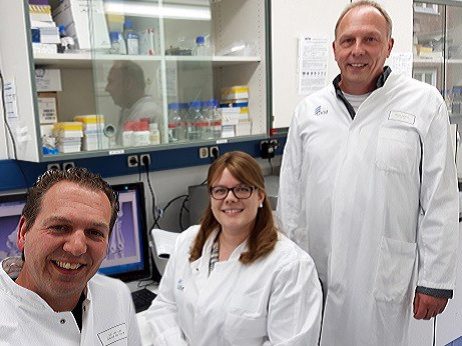by Stefanie Conrad, Giulia Furesi and Wadim Kisel, Bone Lab Dresden
The aim of our project is to examine the role of Wnt signaling in the bone microenvironment during the formation of the pre-metastatic niche, tumor cell homing into the bone marrow, and tumor cell-bone cell interactions in prostate cancer.
Several young scientists have teamed up in the Bone Lab in Dresden to address this.
Dr. Stefanie Conrad, who has been working on this topic since 2011, states: “I am very proud that we have been able to continue the project since the beginning of the funding of the Research Unit SKELMET. In SKELMET, we have identified a tumor suppressor role for Wnt5a in prostate cancer cells. Here in the µBone project, we focus on Wnt5a in the bone microenvironment and its impact on prostate cancer biology.”
Giulia Furesi, who joined our group as Ph.D. student in 2018, aims to unravel novel communication mechanisms in bone-prostate cancer cell cross-talk, in particular extracellular vesicles. After moving from Italy to Dresden, she expressed her motivation affirming: “I’m excited to become part of the “µBone family” working closely with excellent scientists. I strongly believe that this initiative will lead to a detailed understanding of the pathogenesis of bone metastases and will provide molecular basis for therapeutic intervention.”
Since February 2019, Dr. Wadim Kisel joined the Bone Lab as a clinician scientist to investigate the impact of Wnt5a – derived from tumor-adjacent stroma tissue – on patient survival and the formation of bone metastasis using a comprehensive prostate cancer tissue microarray. After five months of intense research, he enthusiastically states: “The early diagnosis of bone metastasis makes a change for patients with cancer. Being able to connect research and clinical routine is fantastic and I am happy to contribute to a deeper understanding of bone metastasis.“




